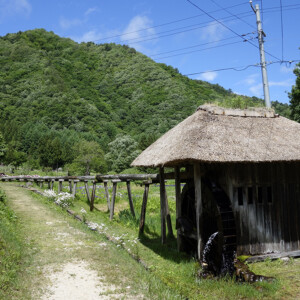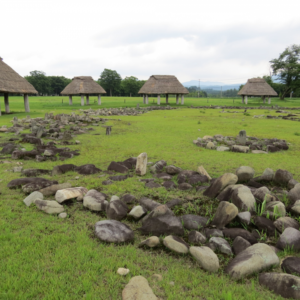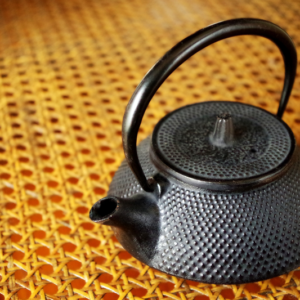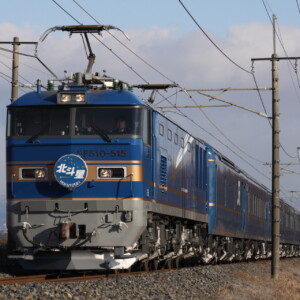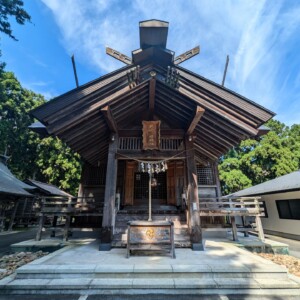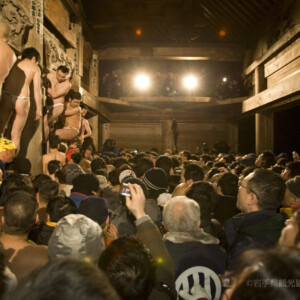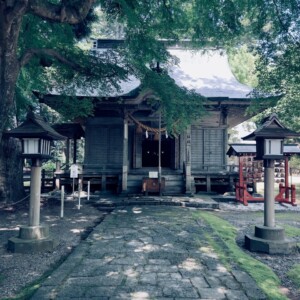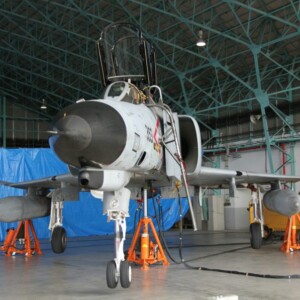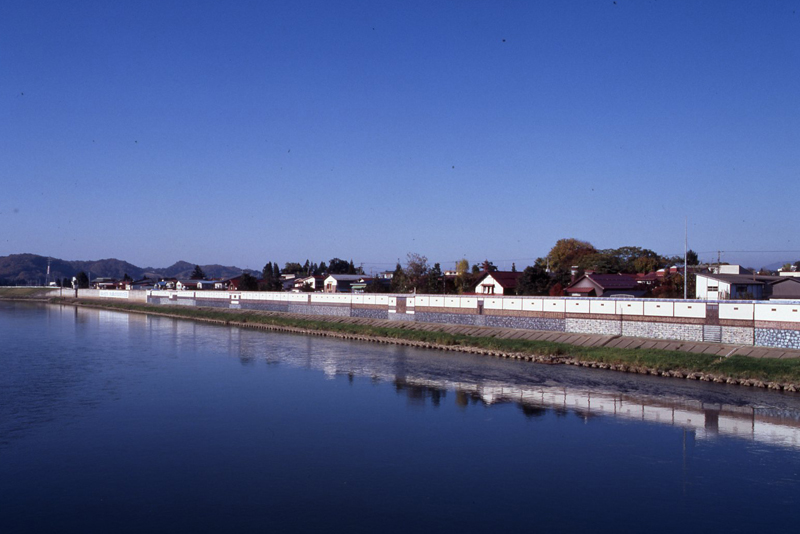
The history of Oishida Town, which was booming in the Edo period due to boat transport on the Mogami River [Yamagata Prefecture]
table of contents
- 1 Boat transportation on the Mogami River began in the Nara period.
- 2 Oishida pier and townscape built and functional by Yoshimitsu Mogami
- 3 Shipment departing from Oishida is limited to "single transport" (only transport)
- 4 Shipping management came under the direct control of the Edo Shogunate due to conflict over interests.
- 5 Boat transportation suddenly declined during the Meiji period when annual rice tax was abolished.
- 6 The Oishida river bank ruins has become a tourist attraction after the construction of a seawall.
- 7 Matsuo Basho stayed in Oishida for three days and wrote his famous haiku.
- 8 Oishida, where culture from Kansai remains thanks to boat transportation
Oishida Town is located almost in the center of Yamagata Prefecture, and the Mogami River flows through the center of the town, making it a thriving agricultural town that produces rice and watermelons.
Many soba lovers from outside the prefecture visit the "Soba Highway," a line of soba shops that use the famous soba noodles The Oishida Hina Festival, which is held every year in early April, the Mogami River Fireworks Festival on August 16th, known for its 10 consecutive 20th ball fireworks that are launched at the end, are one of the most glamorous events in the prefecture.
The Mogami River embankment is lined with scenery that resembles old buildings for over 150 meters, making it a tourist attraction.
Boat transportation on the Mogami River began in the Nara period.
Oishida is a very blessed area called the Mogami River, and ruins from the Paleolithic to the Jomon period were discovered, and it is known that people were inhabited from that time. It appears that boat transportation began during the Nara period, and a dugwood cannon, which is believed to have been used for boat transportation, has also been excavated from around the Mogami River.
Oishida from the Heian period to the Muromachi period rarely appears in history, and little is known about it. It is said that the townscape and port of Oishida were developed during the Sengoku period, when the Mogami clan came to rule it as a territory.
Oishida pier and townscape built and functional by Yoshimitsu Mogami
In particular, Yoshiaki (1546-1614), the 11th head of the Mogami family, is known for making Oishida function as the largest wharf (river bank) on the Mogami River.
Yoshimitsu, who belonged to the Tokugawa army at the Battle of Sekigahara (1600), was recognized by Tokugawa Ieyasu as a territory spanning a wide area from present-day Yamagata City to Sakata City, and was worth over 500,000 koku (exactly unknown). became a daimyo.
Therefore, the government was forced to improve transportation within its territory, and the Mogami River was considered the key to transportation. The town was then positioned Oishida, which is located in a calm river area, as the central bank, and planned town construction was carried out. The townscape created by Yoshimitsu can be seen from the picture of the Oishida Riverbank, painted in the late Edo period.

The Mogami clan's rule in Yamagata did not last long, and after Yoshimitsu's death there was constant dispute over inheriting the family headship (the Mogami incident), and his status and territory were taken away by the shogunate.
However, Oishida remains a hub for shipping, and has become an increasingly important role as a port for the safflower trading of annual rice.
Shipment departing from Oishida is limited to "single transport" (only transport)
After the Mogami clan was defeated, several domains were established in Yamagata, including the Shonai Domain and the Shinjo Domain, but Oishida became the territory of the Yamagata Domain.
In the Yamagata domain, the Torii clan, Hoshina clan, Matsudaira clan, and Hotta clan were replaced by the domain lords, but during the Genroku period (1688-1704), when the Matsudaira clan ruled, there were about 300 boats at the dock in Oishida.
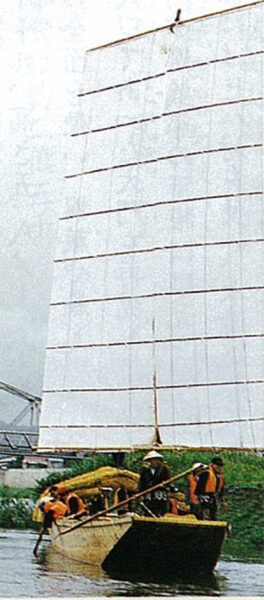
that the Goten , Mikanose , and Hayabusa, which are said to be the three most difficult places in the Mogami River, where the river snakes and the flow is steeper, are said to be the three most difficult places in the Mogami River.
The Mogami River near Oishida was quiet and the perfect location for a dock. Oishida's boat transport was the "Down Oishida ship and Up Sakata ship ," and Oishida's boats were only used to carry Oishida's boats, and Sakata's luggage was generally carried by Sakata ships, and this "single transport" took place until the end of the Edo period.
This was also the reason why Oishida's ship owners were so successful.
Shipping management came under the direct control of the Edo Shogunate due to conflict over interests.
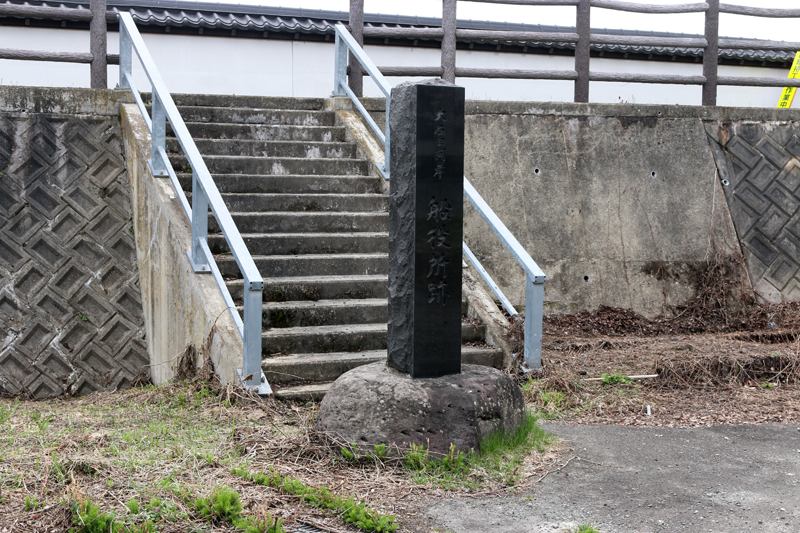
However, in Oishida, a situation arises in which some shipowners monopolize and control, and conflicts of interest with forces opposed to this erupts.
From the end of the Genroku period, a differential arrangement was established to arrange boat transport, and it seemed to settle for the time being, but by the late 1700s, control again became unavailable, and the number of river boats also decreased.
In 1792, in order to resolve this confusion, the Edo shogunate abolished the local shogunate system and established the Oishida Funen Yakusho, a shogunate system under the direct control of the shogunate. This Oishida Ship Office managed Oishida's shipping until the end of the Edo period.
Boat transportation suddenly declined during the Meiji period when annual rice tax was abolished.
After the Meiji Restoration, annual tax rice changed to taxes based on land prices, and the importance of boat transportation decreased and rapidly declined.
Furthermore, overland will be developed, and logistics will be mainly overland. Still, steam boats were introduced and passenger ships were launched to take advantage of the ship's advantage of having a large amount of luggage that could be carried at once, but with the opening of the Ou Main Line in 1903, Oishida's boat transportation came to an end.
The Oishida river bank ruins has become a tourist attraction after the construction of a seawall.
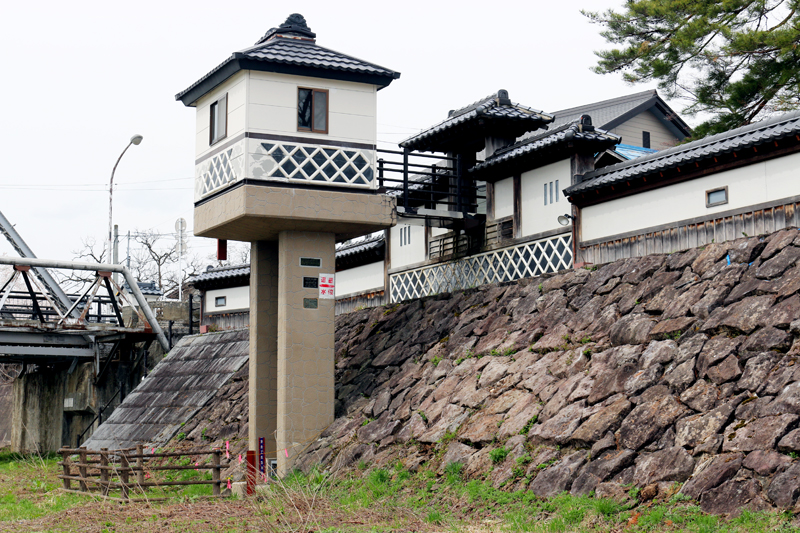
The Mogami River is frequently raging and causing floods. Therefore, embankments were carried out over 14 years from 1965 (Showa 40), and concrete embankments (special embankments) of approximately 2,100m on both sides were built.
This included the area where Oishida's dock was located, and the town was separated from the Mogami River. However, the people of Oishida, who are disappointed that the traditional scenery has been damaged even though the flood damage has disappeared, are asking, ``Can we somehow restore the connection between the river and the town that flourished through the Mogami River?'' The landscape was improved over a period of five years starting in 1991.
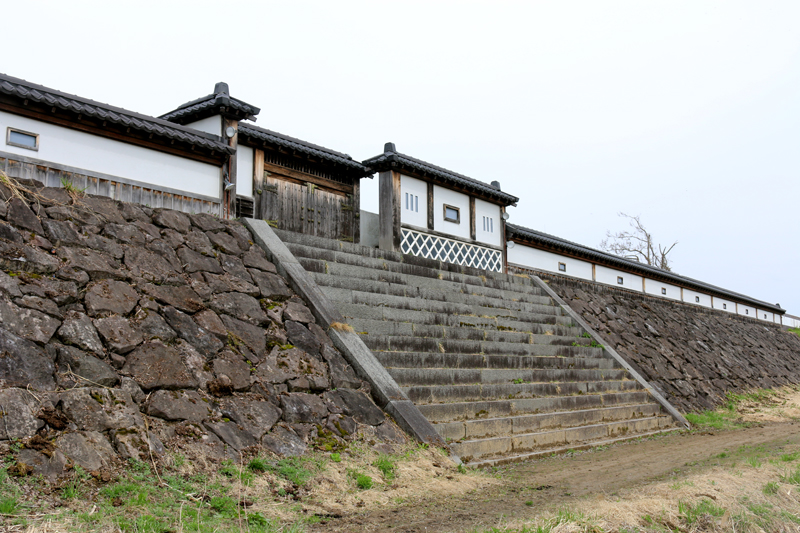
The entire surface of the embankment, which is 151.6m long and 5.8m high, has been used to recreate the Daimon gate, which was the entrance to the warehouse and ship's office. The Oishida pier, which was bustling during the Edo period, has been revived as a new seawall.
Oishida Town History and Folklore Museum <Information>
- Facility name: Oishida Town History and Folklore Museum
- Location: 37-6 Oishidaotsu, Oishida-machi, Kitamurayama-gun, Yamagata Prefecture
- Phone number: 0237-35-3440
- Opening hours: 10:00-16:30
- Admission fee: 200 yen for adults, 150 yen for high school and university students, 100 yen for elementary and junior high school students)
- Closed: Mondays, the day after holidays, year-end and New Year holidays (December 29th to January 3rd), and closed for exhibition changes.
Matsuo Basho stayed in Oishida for three days and wrote his famous haiku.
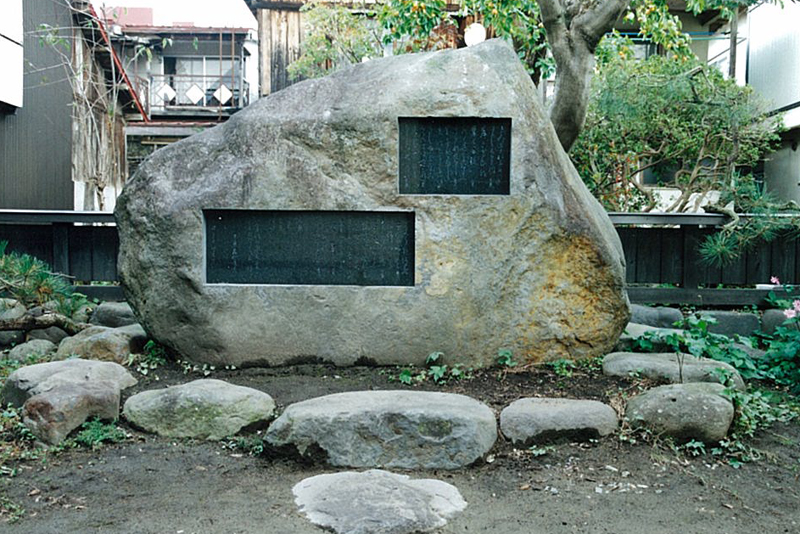
Matsuo Basho in 1689, during the Genroku period, when it flourished as a dock , and stayed for three days.
Basho and his group, who had planned to enjoy the river from Oishida, were forced to wait at their haiku friends Takano Kazue's house for the weather to recover from the bad weather. At that time, a haiku meeting was also held, and the four of them gathered to preserve the poetry (a collection of 36 consecutive haiku) "Samidareo" (a cultural property designated by Yamagata Prefecture).
A line left by Basho in the poet ``Samidare wo'' is
Isuzu Shimogami River collects samidare
is.
The famous "Mogami River is collected in May rain," and this poem was written when I traveled from Oishida to Shinjo and then went down the Mogami River, and at first I wrote "Suzushi"
However, it is said that after various revisions , it was "faster."
Oishida, where culture from Kansai remains thanks to boat transportation
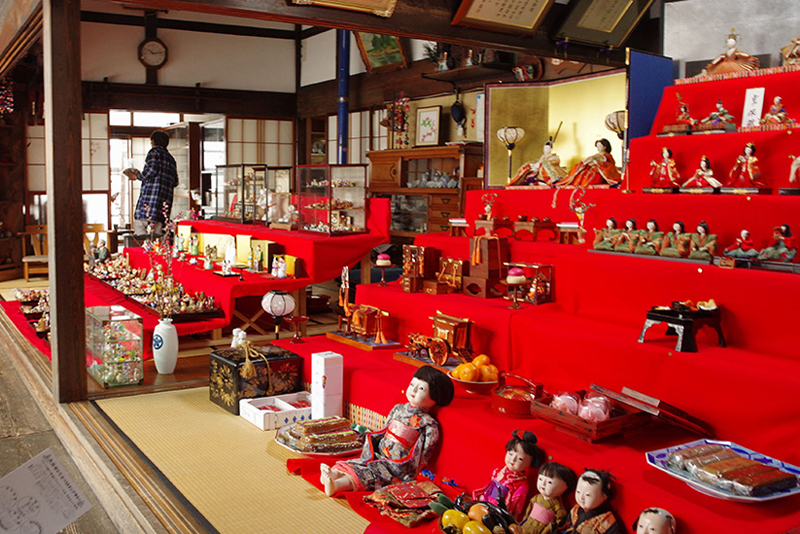
After working in Sakata, which had business with Osaka, Oishida has been passed down to Kyoto and Osaka culture.
A typical example is Ohina-sama. Large Kyoho Hina, Kokinbina, known as the prototype of modern Hina-sama, and Kyoto Imperial Dolls, are still preserved in many private homes today.
The Oishida Hina Festival , which will be held in early April, allows you to see the Hinatas decorated in each household, called "Ohinami," and is a tradition of Oishida Spring.
Oishida Town <Information>
- Oishida Town
- Location: Oishida Town, Kitamurayama District, Yamagata Prefecture
- Phone number: 0237-35-2111 (Oishida Town Hall)
- URL: Oishida town tourist information site Oishida news



!["Mogami safflower" certified as a Japanese heritage and Japanese agricultural heritage [Yamagata Prefecture] Mogami safflower](https://jp.neft.asia/wp-content/uploads/2022/12/30121446_m-1-150x150.jpg)
![Nagai, the former Yonezawa domain boat transport town that flourished through the Mogami River [Yamagata Prefecture] 71_Mogami River Bridge (Flower Nagai Line) 2](https://jp.neft.asia/wp-content/uploads/2023/05/1387761f176bfc409893953e0b93371f-150x150.jpg)
![It's tasty and packed, and it's also very cost-effective! Ichian, a soba restaurant in Tendo City [Yamagata Prefecture] Ichian's two-color plate soba](https://jp.neft.asia/wp-content/uploads/2024/05/IMG_8924-150x150.jpg)
![[Tohoku Autumn Leaves Driving Map: Miyagi Edition] 3 Recommended Driving Courses and Local Cuisine! Miyagi Catch](https://jp.neft.asia/wp-content/uploads/2024/10/2df27b453740b4526c9ed0e737aee89e-150x150.jpg)

![[Tsuruoka City, Yamagata Prefecture] Tsuruoka's food culture has been passed down for hundreds of years 1470_Zenpoji Temple](https://jp.neft.asia/wp-content/uploads/2023/04/2d6b75e2500adfb8f7b8e6c68a2f7a03-150x150.jpg)
![[Yonezawa City, Yamagata Prefecture] Visit a hot spring connected to the Uesugi family of the Yonezawa Domain 1530_Onogawa Onsen Foot bath](https://jp.neft.asia/wp-content/uploads/2023/05/4ed5d5851f7d92ca3b0ebed3220d6418-150x150.jpg)
![[Yamagata Prefecture] Walking through Tokamachi and Nanokamachi in Yamagata City, where the scent of the Edo period remains Yamagata city from Kasumi Castle Central Observation Room](https://jp.neft.asia/wp-content/uploads/2023/09/26303875_m-150x150.jpg)

